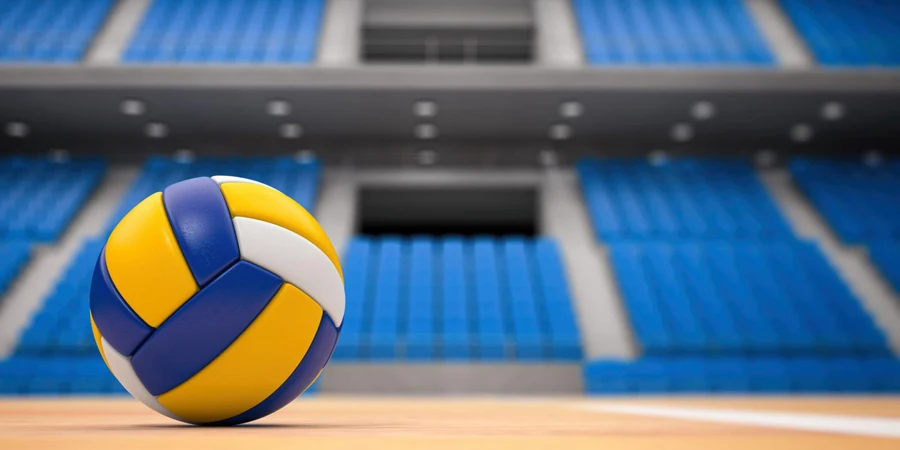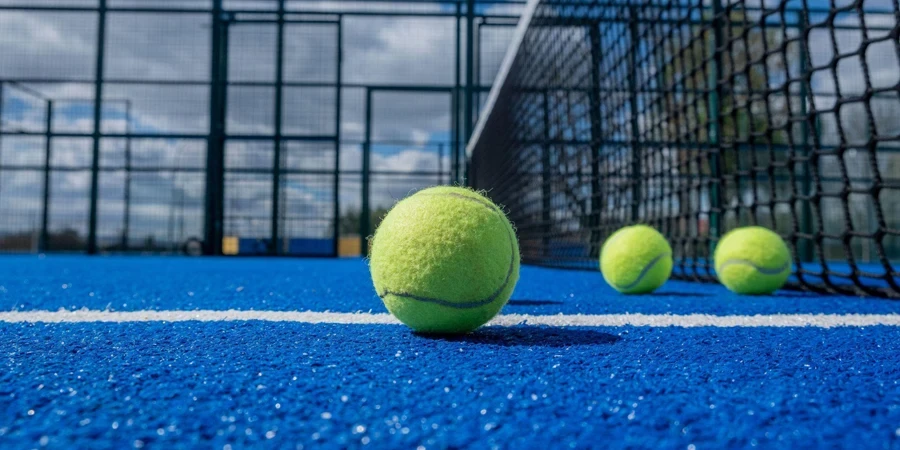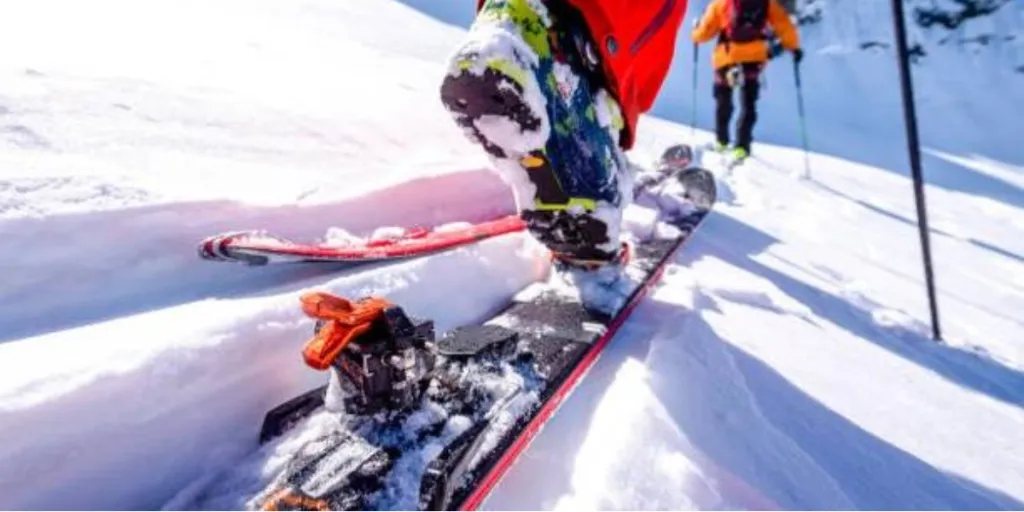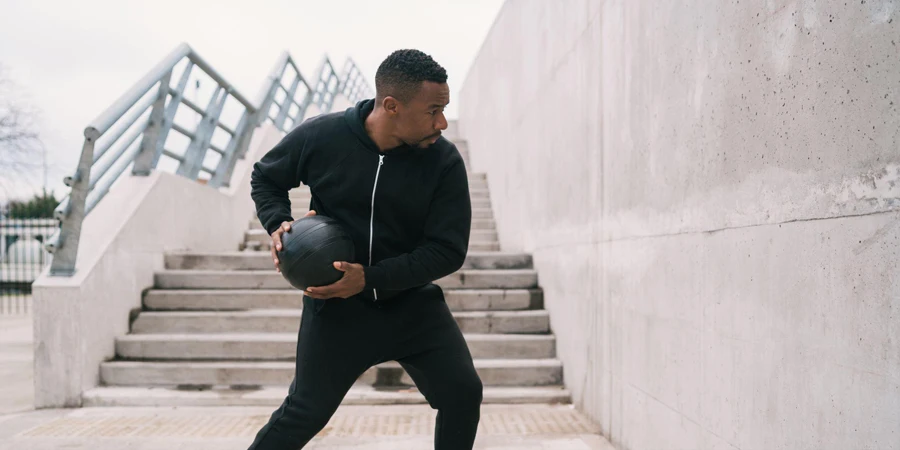Table of Contents
● Introduction
● Navigating the Volleyball Market
● Key Factors in Volleyball Selection
● Leading Volleyballs of 2024
● Conclusion
Introduction
The 2024 volleyball scene showcases significant advancements in ball technology, catering to the sport’s growing fanbase and the increasing demands of players. Innovations have led to volleyballs with enhanced grip, durability, and aerodynamic efficiency, elevating gameplay and ensuring peak athlete performance. In this innovative era, choosing the right volleyball is crucial, and our insights into 2024’s top volleyballs are designed to highlight the key features that define the best in the game.
Navigating the Volleyball Market
The global volleyball market size was valued at USD 320.54 million in 2022 and is expected to grow to USD 541.36 million by 2030, with a compound annual growth rate (CAGR) of approximately 6.77% between 2023 and 2030. The top five players in the volleyball market include Mikasa, Molten, Tachikara, Wilson, and Spalding, which together hold about 56% of the market.
The evolution of the market is driving the development of advanced materials and technologies in volleyball manufacturing, leading to the creation of balls that are not only more efficient in play but also tailored to the specific needs of different playing environments, such as indoor courts and beach volleyball. Furthermore, the market’s growth is supported by the expanding infrastructure for volleyball across schools, colleges, and professional leagues.

Key Factors in Volleyball Selection
Skill Level
The skill level of volleyball players plays a pivotal role in the selection of the appropriate volleyball, as it directly impacts their performance, learning curve, and overall enjoyment of the game. For beginners or recreational players, understanding basic rules, positions, and being able to serve over the net consistently is fundamental. These players might benefit from volleyballs that are designed to be more forgiving and easier to control, facilitating learning and skill development.
As players progress to intermediate levels, the need for a volleyball that offers a balance between control and power becomes apparent. These players have a good grasp of the game’s dynamics and require a ball that allows for more strategic play, including precise passing and controlled sets. The volleyballs suited for this level often have a more consistent weight distribution and aerodynamics to aid in the development of advanced skills.
For advanced players, including those at the competitive or professional levels, the selection criteria become even more stringent. These athletes demand volleyballs that provide exceptional grip, responsiveness, and durability to withstand intense play. The materials, construction, and design of these balls are engineered to meet the rigorous demands of high-level volleyball, offering the precision, speed, and control needed for competitive play.

Playing Environment
The playing environment is a critical factor in the selection of volleyballs, as different surfaces and conditions demand specific ball characteristics for optimal play. Indoor courts, often used in professional and competitive volleyball, require balls with a high degree of control and precision. These volleyballs typically have a smoother surface and a consistent internal pressure to maintain stable flight paths and accurate touches, essential for the fast-paced nature of indoor games.
On the other hand, beach volleyball, played on sand, necessitates volleyballs that are slightly larger and softer. This design compensates for the uneven and yielding nature of sand, allowing players to achieve better grip and control despite the challenging surface. The materials used for beach volleyballs are also engineered to withstand outdoor elements such as sun, wind, and moisture, ensuring durability and consistent performance. Grass and recreational outdoor environments introduce another set of considerations, such as the ball’s visibility and its ability to handle variable surface textures. Volleyballs for casual outdoor play are often designed with vibrant colors for easy tracking in diverse lighting conditions and are constructed to endure rougher surfaces without compromising the ball’s integrity or playability.
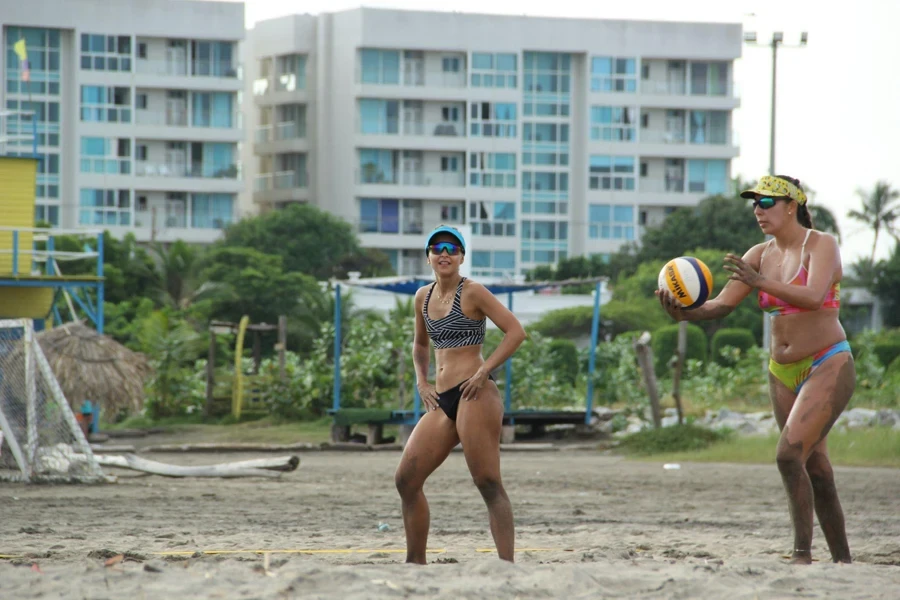
Roles within a Team
Given the constraints of not being able to switch volleyballs frequently within a single match, selecting versatile volleyballs that cater to the diverse needs of team roles becomes paramount for practices, ensuring players are well-prepared for any in-game scenario. Setters, who orchestrate the game’s flow and require precise ball control for setting up plays, might prefer volleyballs that offer better grip and tactile feedback for accurate passes. The setter’s role is demanding, requiring quick decision-making, aggression, and exceptional passing skills, making the choice of volleyball crucial to their performance.
Outside hitters and opposites, who are primarily responsible for spiking, need volleyballs that are designed for high impact and can withstand powerful hits. These players benefit from balls that maintain their shape and offer consistent performance, allowing them to execute spikes effectively. The attributes of a good opposite hitter, such as height, jumping ability, and spiking power, dictate the need for a durable and reliable volleyball. Middle blockers, tasked with defending against spikes, might look for volleyballs that are easier to control for quick, reactive blocks. Their role requires height, fast footwork, and defensive prowess, influencing the selection towards volleyballs that can be easily maneuvered in tight defensive situations. Liberos, who specialize in defensive plays and serve receptions, require volleyballs that offer excellent control for precise digs and passes. The agility and passing expertise of liberos call for a volleyball that enhances their ability to perform under pressure and execute accurate defensive plays.
Types of Material Composition
Volleyballs are crafted from various materials, each contributing unique characteristics that influence the ball’s feel, durability, and suitability for different levels of play and environments.
Synthetic leather, widely used for both competitive and recreational indoor volleyballs, offers durability, soft touch, and affordability. Genuine leather, preferred for its unmatched feel, is costlier and needs more care. Composite leather, a synthetic blend, mimics genuine leather’s feel, suitable for indoor/outdoor play due to its durability and grip. Rubber volleyballs, durable and low-maintenance, are ideal for outdoor, training, and educational use but provide less control. Foam volleyballs, soft and lightweight, are great for beginners and training, not for competitive play. Microfiber composite volleyballs, used in professional indoor games, offer superior grip, soft touch, and moisture management for high-level play.
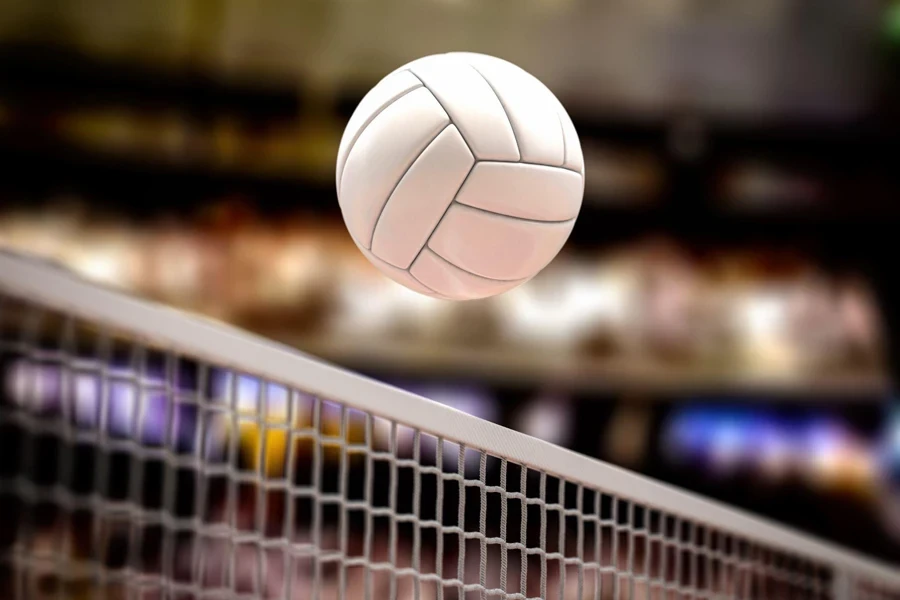
Weight Distribution
The weight distribution of a volleyball is designed to ensure balance and uniformity, allowing for predictable flight and bounce characteristics during play. A well-constructed volleyball typically features a symmetrical arrangement of panels, often 18 in total, which are glued or stitched together over a bladder (usually made of rubber or a similar material). This symmetrical design ensures that the weight is evenly distributed across the entire surface of the ball.
For official play, the Fédération Internationale de Volleyball (FIVB) specifies that an indoor volleyball should weigh between 260 and 280 grams (9.17 to 9.88 ounces). The balanced weight distribution is crucial for the ball’s performance, affecting everything from the serve and set to the spike and pass. A volleyball’s internal pressure, which is recommended to be between 0.30 and 0.325 kg/cm² (4.26 to 4.61 psi), also plays a significant role in its overall weight and feel.
Aerodynamic Design
Volleyball design has significantly evolved, with changes in panel shapes and textures enhancing aerodynamics. The traditional eighteen-panel design was revamped in 2008 when the FIVB adopted the Mikasa ball with eight dimpled panels for improved handling and flight stability. These modifications, reducing drag and enhancing in-flight stability, assist players, especially setters, in achieving more precise ball placements. The streamlined design of modern volleyballs allows for better control and more accurate trajectory during play.
Internal Pressure and Responsiveness
Volleyballs are designed with specific internal pressures to ensure optimal performance and responsiveness during play. The standard internal pressure for volleyballs ranges between 4.26 and 4.61 psi (29.4-31.8 kPa). This pressure level is crucial for maintaining the ball’s shape and ensuring it behaves predictably during games, providing players with the consistency needed for precise control and strategic play.
The responsiveness of a volleyball to touch and its interaction with players is significantly influenced by this internal pressure. A ball with the correct pressure will have a reliable bounce, will not deform under impact, and will travel through the air with stability. This is particularly important for setters and hitters who rely on the ball’s predictable behavior to execute accurate sets and powerful spikes.

Leading Volleyballs of 2024
Tachikara Composite Leather Sensation
The Tachikara Composite Leather Sensation stands out for its unparalleled blend of softness and durability, making it a favorite among volleyball players seeking both comfort and long-lasting performance. Its composite leather material ensures that the ball retains its shape and texture even after rigorous use, providing a consistent experience in every game. The enhanced grip and control offered by this volleyball make it an excellent choice for players at all levels, from beginners to professionals, ensuring that every serve, pass, and spike is executed with precision.
Molten Elite Masterpiece
The Molten Elite Masterpiece is at the forefront of volleyball innovation, thanks to its FLISTATEC technology, which revolutionizes the way the ball moves through the air. The strategically placed dimples on the ball’s surface minimize air resistance, allowing for a smoother, more stable flight. This feature is particularly beneficial for setters and hitters who rely on accuracy to dominate the game. The Molten Elite Masterpiece’s commitment to enhancing gameplay through technological advancements has made it a staple in professional competitions and a highly sought-after model for serious players.
Mikasa High-Performance Pro
The Mikasa High-Performance Pro is designed with the elite athlete in mind, incorporating advanced aerodynamic features to ensure optimal control over the ball’s flight path. Its microfiber composite cover not only feels great to the touch but also withstands the demands of intense play, making it a durable option for competitive environments. The eight-panel design increases the contact area for players, providing a better grip and a more responsive feel during play. Whether used in high-stakes matches or demanding practice sessions, the Mikasa High-Performance Pro delivers exceptional performance that meets the standards of volleyball professionals worldwide.
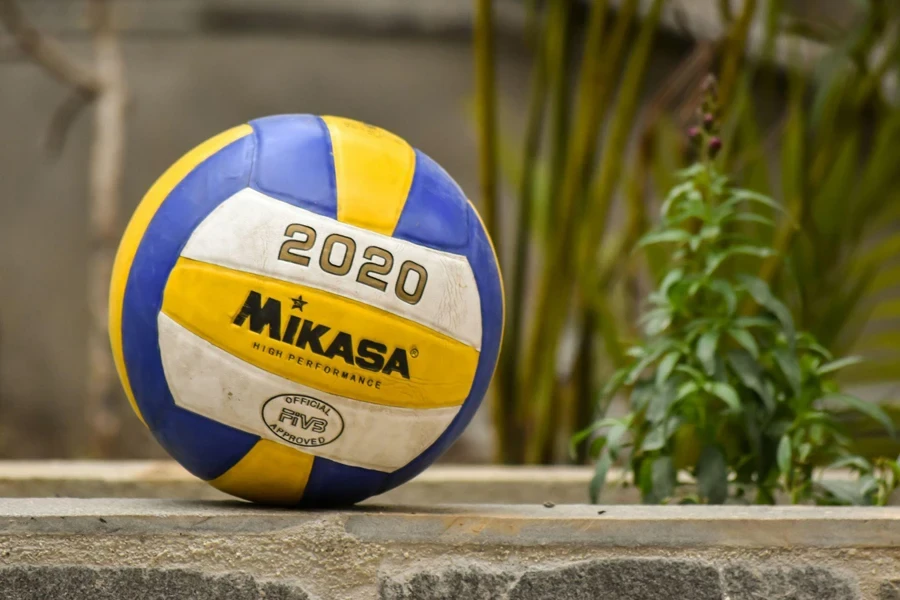
Conclusion
The 2024 advancements in volleyball technology represent a significant stride in enhancing player performance and game quality. Innovations in material composition, aerodynamic design, and internal pressure adjustments have led to volleyballs that surpass the demands of competitive play. These improvements, rooted in a deep understanding of player requirements across all levels, promise to elevate the strategic and skillful aspects of volleyball, setting a new standard for the sport’s future.
